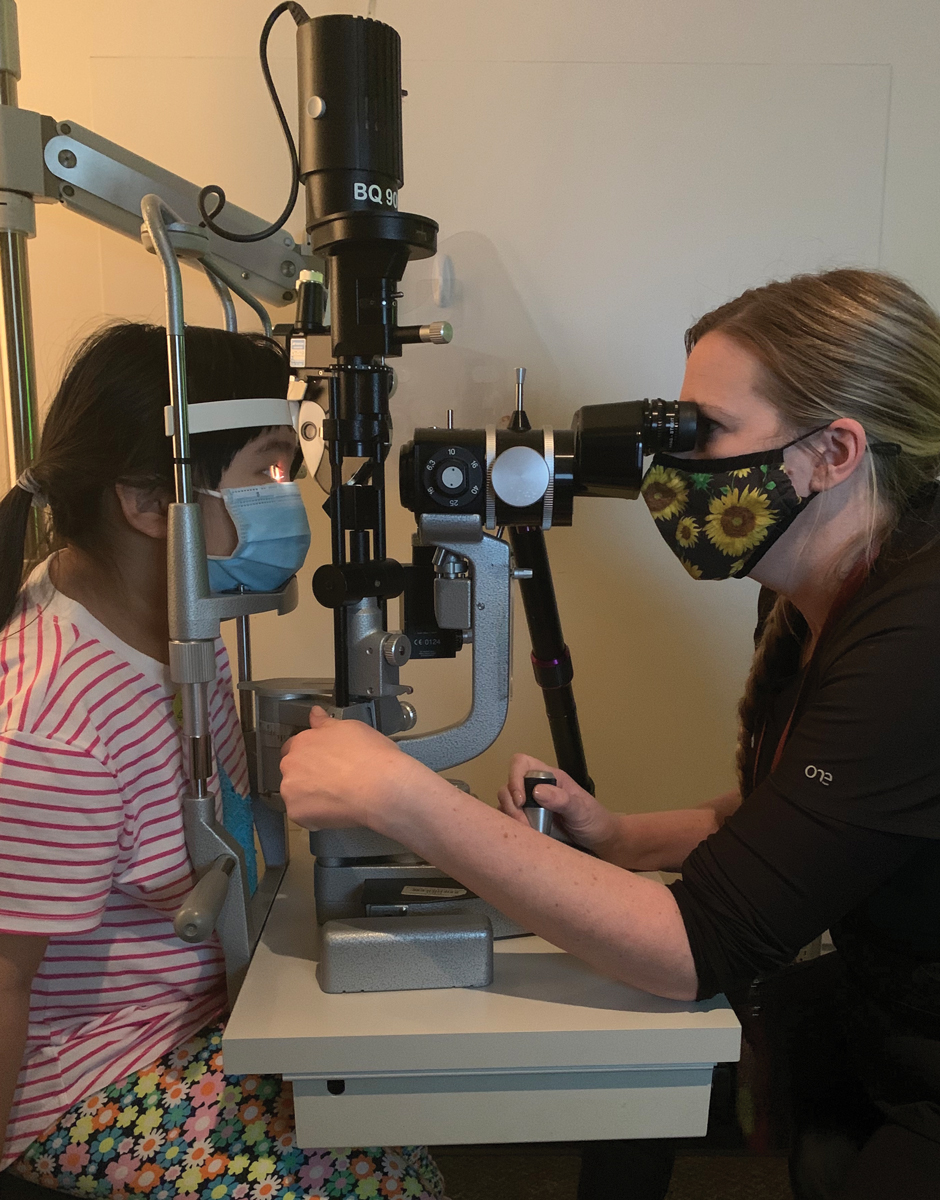 |
|
The contour of the retinal pigment epithelium and chorioscleral interface could provide insight about which patients are most at risk for high myopia. Photo: Maria Walker, OD. Click image to enlarge. |
Research has pointed to changes in the retinal pigment epithelium (RPE) as indicators of scleral growth and the possible presence of high myopia, but a recent study found that changes in the RPE may even represent early progression of the disease. Using SD-OCT images from pediatric patients, researchers evaluated the relationship between the contour of the posterior eye and subsequent myopia progression.
The study participants included 35 children aged eight to 12 years with myopia. Baseline measurements were taken during an initial appointment, at which patients were instructed to wear their glasses every day and then return in one year for a follow-up visit. During both visits, the researchers measured visual acuity with spectacle correction and patients underwent OCT imaging.
Baseline posterior ocular contour measurements correlated with baseline values for both axial length and spherical equivalent refraction (SER), two key indicators of myopia. The baseline contour of the RPE and chorioscleral interface (CSI) did not predict disease progression; however, researchers did find that axial length increased within the year if the baseline contour of the RPE was more prolate than that of the CSI. Eyes with higher myopia usually had a more prolate posterior ocular contour.
“We investigated whether the one-year change in the posterior ocular contour correlated with the one-year progression of myopia, and found that it was indeed significantly correlated with both the one-year change in axial length and SER,” the researchers wrote in their study. “Briefly, a more prolate RPE contour was associated with greater elongation of axial length and a more negative SER, which was similar to the relationship between the CSI contour and the axial length.”
If you have access to SD-OCT, observing these specific posterior ocular contour patterns could help you determine which patients are at greater risk of myopia onset or progression and allow for more timely intervention, improving visual outcomes. This information, along with further research, will help us gain a better understanding of the mechanism of myopia and its pathogenesis.
Xu S, Hu Y, Cui D, et al. Association between the posterior ocular contour pattern and progression of myopia in children: a prospective study based on oct imaging. Ophthalmic Physiol Opt. 2021;41:1087-96. |

